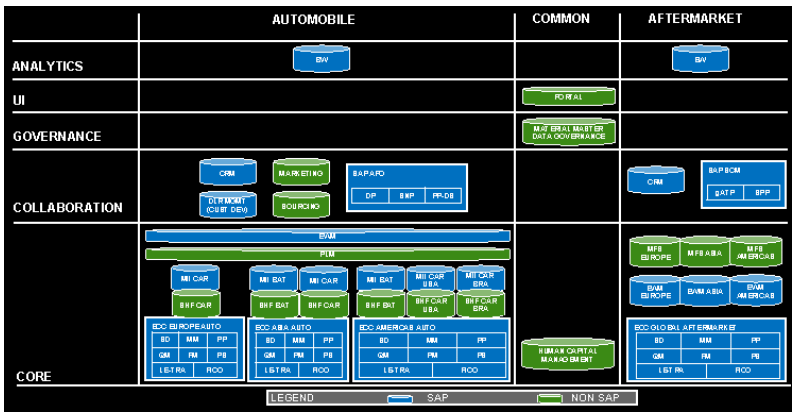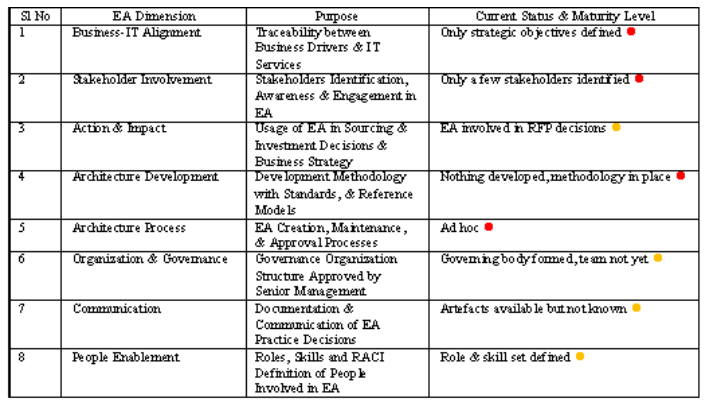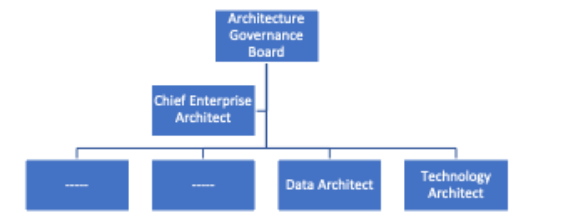SAP Certified Professional - SAP Enterprise Architect P_SAPEA_2023 Exam Practice Test
The online marketing channel is targeted only to individual customers, who should be able to choose any of the 50 combinations that Wanderlust offers for its electric cars. Every confirmed online order must be first checked for ready stock availability and, if unavailable, must go for production scheduling. As Chief Enterprise Architect of Wanderlust, along with the SAP Enterprise Architect, you have identified Lead to Cash (L2C) as the key E2E process. However, you have found out that the SAP Reference Business Architecture content has several Business Process Variants of the L2C process, from which you are supposed to choose one suitable variant for Wanderlust's product range and business model. Which of the following combinations of L2C Business Process Variants and business reasons are the most suitable? Note: There are 2 correct answers to this question.
Answer : A, D
Considering Wanderlust's product range and business model, which targets individual customers and offers a wide range of electric car combinations, the Lead to Cash-B2C with Make to Stock variant would be suitable for orders that can be met from existing stock. Similarly, the Lead to Cash-B2C with Make to Order variant would fit the business model when an individual customer orders a combination not available in stock, necessitating production scheduling. Both variants cater to the business-to-consumer (B2C) model and account for the direct sales approach to individual customers. Reference = These variants would be documented in SAP's Business Process Architecture content, which includes various Lead to Cash process scenarios, adjusted for different business contexts.
You design a Solution Architecture, based on SAP S/4HANA, for an internationally active customer that has a national subsidiary in China and other countries that have special requirements for data storage. As the responsible Enterprise Architect, your task is to propose a solution that takes these special requirements into account. How do you proceed when your customer's Architecture Guideline calls for following a "cloud-first" approach?
Answer : C
The customer's architecture guideline calls for following a 'cloud-first' approach, but this does not mean that all solutions must be deployed in the cloud. In some cases, private cloud or on-premise options may be necessary to meet the customer's data protection requirements.
For example, if the customer's subsidiary in China requires that data be stored within China, then a private cloud solution in China may be the best option. Similarly, if the customer's other subsidiaries have different data protection requirements, then a hybrid solution that combines cloud and on-premise deployments may be necessary.
The Enterprise Architect must carefully consider the customer's specific requirements and constraints before making a decision about the deployment environment.
Here are some of the factors that the Enterprise Architect should consider:
The customer's data protection requirements:The Enterprise Architect must understand the customer's specific data protection requirements and ensure that any solution meets those requirements.
The availability of cloud-based solutions that meet the customer's requirements:Not all cloud-based solutions meet the same data protection requirements. The Enterprise Architect must ensure that the cloud-based solutions that are being considered meet the customer's requirements.
The cost of different deployment options:The Enterprise Architect must consider the cost of different deployment options, including cloud, private cloud, and on-premise.
The scalability and performance requirements of the solution:The Enterprise Architect must ensure that the solution meets the customer's scalability and performance requirements, regardless of the deployment environment.
By carefully considering all of these factors, the Enterprise Architect can make a decision about the deployment environment that meets the customer's specific requirements and constraints.
Topic 2, Case Study -- Wanderlust
Introduction
Wanderlust GmbH, headquartered in Germany but with manufacturing facilities and sales globally, is a leading global manufacturer of conventional fuel driven cars. They are renowned for their best-in-class engineering, but not so much for aftermarket customer service. In recent years, Wanderlust has had limited success expanding into the market of electric vehicles. Following is Wanderlust's geographical manufacturing and supply spread:

Wanderlust offers one compact electric Sedan (model ELAN) and one compact electric SUV (model ELUV), each with three variants -- basic (LX), mid-range (VX) and high-end (ZX). Customers can also choose from a range of five metallic colors, two drive trains and two battery ranges.Overall, 50 different combinations are offered for all segments and variants put together.
Extracts from CEO Interviews -- Business Environment
Constraints/Issues
o Stiff water consumption regulations and enormous penalties for violation -- Lithium extraction is a
heavy water intensive process and mine locations are in very arid areas like the Australian outback
and Atacama Desert
o Significant dependence on external suppliers of Lithium batteries due to limited number of
manufacturing units, long lead times and high carbon footprint in all car manufacturing facilities except
Brazil.
o Long delays in spare battery availability, leading to an avalanche of unresolved battery related
customer complaints for vehicles under warranty
o Limited charging infrastructure, long charging cycles (as compared to refilling fuel) and slow resolution
of battery related complaints.
o Dwindling in store footfall due to pandemic (for feature-based vehicle selection prior to test drive)
Wanderlust offers one compact electric Sedan (model ELAN) and one compact electric SUV (model ELUV), each with three variants -- basic (LX), mid-range (VX) and high-end (ZX). Customers can also choose from a range of five metallic colors, two drive trains and two battery ranges.Overall, 50 different combinations are offered for all segments and variants put together.
Extracts from CEO Interviews -- Business Environment
Constraints/Issues
o Stiff water consumption regulations and enormous penalties for violation -- Lithium extraction is a
heavy water intensive process and mine locations are in very arid areas like the Australian outback
and Atacama Desert
o Significant dependence on external suppliers of Lithium batteries due to limited number of
manufacturing units, long lead times and high carbon footprint in all car manufacturing facilities except
Brazil.
o Long delays in spare battery availability, leading to an avalanche of unresolved battery related
customer complaints for vehicles under warranty
o Limited charging infrastructure, long charging cycles (as compared to refilling fuel) and slow resolution
of battery related complaints.
o Dwindling in store footfall due to pandemic (for feature-based vehicle selection prior to test drive)
Extracts from CIO Interviews -- IT Environment
Extracts from CIO Interviews -- IT Environment
Strategic Priorities - IT
o Ease of usage
o Ease of Maintenance
o Total Cost of Ownership Optimization
o Time to Value Acceleration
Transformation Status
o Only at a conceptual stage -- no planning done yet
o Nascent architecture practice
o Unclear on supported processes, required capabilities, applications, and transition path
o Yet to identify, prioritize and sequence initiatives
As-Is Architecture

Wanderlust has a separate organization and setup for their Automobile and Aftermarket businesses
o Wanderlust is reluctant to consider cloud for Core applications due to data privacy concerns, but are
open for Collaboration applications
o Automobile business started off in Europe and grew through acquisitions in Asia and Americas
o Automobile business runs on three continental SAP ECC instances with inherited, disparate
processes, which need to move to S/4HANA
o Automobile business is also looking to harmonize their processes across the continents, adopt a
seamless, transparent global supply chain for batteries and consolidate the continental instances into
a global single instance, data regulations permitting
o Automotive business uses a highly complex custom developed dealer management solution on ECC,
which needs to be replaced
o Automotive business uses SAP APO, which is nearing end of lifecycle and needs to be replaced by
IBP (DP & SNP) & S/4HANA (PP-DS)
o Automotive business uses several bespoke non-SAP applications, which are considered
irreplaceable, except for the Marketing and Sourcing applications, whichare expensive to maintain,
seldom used and henceneed to be replaced
o Aftermarket business processes are largely uniform and handled through a single ECC instance which
also should move to S/4HANA
o Aftermarket business uses SAP SCM which is nearing end of lifecycle and needs to be replaced by
S/4HANA AATP (gATP) and eSPP (SPP)
Extracts from Interview with Enterprise Architect
Enterprise Architecture Dimensions & Maturity
o Wanderlust's Key EA Dimensions, their overall purpose and current maturity level

Top three priorities given the current maturity level, are as follows
o Stakeholder Involvement is the topmost priority, to create a Stakeholder Map that'll identify all key EA stakeholders within Wanderlust
o Business-IT Alignment is also a top priority, to anchor every IT initiative to a Business Strategy Map,
consisting of clearly defined strategic business objectives, tangible goals and measurable value drivers
o Architecture Development is the next priority, beginning with development of business architectures, followed by application architectures and finally opportunities & solutions planning
Enterprise Architecture Practice Structure (Current)

Enterprise Architecture Principles
o Wanderlust's Enterprise Architecture Principles are a collection of crisp and precise one liners
pertaining to business, application, information, integration, technology and security aspects of
transformation
o Some of the EA Principles in the repository are

These EA Principles serve as high level directional statements and long term guard rails to the above
six aspects of transformation programs & projects
o They should ideally correlate (many to many) with the Strategic Objectives, defined in the Business-IT
alignment EA Dimension -- this is yet to be done though
What kind of applications can you develop with SAP Business Application Studio?
Answer : C
SAP Business Application Studio is a modern development environment designed to support the development of various SAP-centric applications. Among the supported application types are:
SAPUI5 (SAP Fiori) applications (C): SAP Business Application Studio provides extensive tools and templates specifically tailored for developing SAPUI5 applications, which are the backbone of the SAP Fiori user experience. This includes support for frontend development with rich user interfaces, integration with SAP services, and adherence to SAP Fiori design principles.
Options A and B are incorrect because SAP Business Application Studio does not support ABAP development directly within its environment. ABAP development traditionally requires a different set of tools and environments provided by SAP, such as the ABAP Development Tools (ADT) in Eclipse or the ABAP environment on SAP Cloud Platform.
SAP Business Application Studio documentation.
SAP Fiori development guidelines provided by SAP.
Which of the following lists of SAP Enterprise Architecture artifacts support making informed Target Application Architecture decisions that are aligned with the strategic direction of a company?
Answer : A
To make informed decisions about the Target Application Architecture that are aligned with the strategic direction of a company, certain artifacts are necessary to ensure that there is a clear connection between the stakeholder needs, business strategy, and the architectural vision. Option A includes a Stakeholder Map, which identifies the key players and their interests; a Business Strategy Map, which outlines the strategic objectives; a Solution Strategy, which details the approach to achieve the objectives through solutions; and an Architecture Roadmap, which lays out the plan to move from the current to the future state. These artifacts together provide a comprehensive view that guides the Target Application Architecture towards aligning with the company's strategic direction.
Enterprise Architecture frameworks and methodologies that outline the use of strategic artifacts in architecture development.
Guidelines on creating architecture roadmaps that align with business strategies.
Which of the following roles are missing from Wanderlust's current Enterprise Architecture practice structure? Note: There are 2 correct answers to this question.
Answer : C, D
From the current Enterprise Architecture practice structure presented for Wanderlust GmbH, it appears that there are dedicated roles for a Chief Enterprise Architect and a Technology Architect. However, the roles of Application Architect and Business Architect are not explicitly mentioned. An Application Architect is crucial for designing and maintaining the application landscape, ensuring that it aligns with business requirements, while a Business Architect is essential for aligning IT strategy with business strategy and understanding the impact of business changes on the architecture. Their absence indicates a gap in ensuring the alignment between business processes and IT systems, as well as in defining and maintaining the application strategy. Reference = The roles and responsibilities within an Enterprise Architecture framework typically include both Application and Business Architects to ensure a comprehensive approach to aligning IT and business strategies.
The CIO of Wanderlust strongly feels that the seldom-used legacy Marketing application cannot be the platform to rejuvenate their online marketing business. As Chief Enterprise Architect, the CIO has entrusted you with the responsibility of finding a suitable replacement that can support all current processes and also address the issues plaguing the existing application. Which of the following should you do to conclusively shortlist possible applications to replace the existing one? Note: There are 2 correct answers to this question.
Answer : A, C
Starting with the current processeswill help to understand the capabilities that are needed in a new application. This will help to narrow down the field of potential applications and identify those that are most likely to meet the needs of Wanderlust.
Mapping business capabilities to these processeswill help to identify the gaps in the current capabilities and the areas where improvement is needed. This will help to ensure that the new application meets the needs of Wanderlust and addresses the issues plaguing the existing application.
Relating Wanderlust processes to industry standard processeswill help to identify applications that are already being used by other organizations. This can be a good way to ensure that the new application is compatible with other systems and that it can be easily integrated with existing systems.
The other two options, Comparing the costs of those market leading online marketing applications and Understanding the features of leading online marketing applications available in the market through product demonstrations and ranking the applications in terms of features, are not as critical at this stage. The costs of the applications can be compared once the shortlist of applications has been finalized. The features of the applications can be understood through product demonstrations once the shortlist has been finalized.
Therefore, the best course of action is to start with the current processes, map business capabilities to these processes, and identify which application(s) in the market can deliver such capabilities. This will help to narrow down the field of potential applications and identify those that are most likely to meet the needs of Wanderlust.
Here are some of the benefits of taking a process-centric approach to selecting a new marketing application:
It can help to ensure that the new application meets the needs of the business.
It can help to identify applications that are already being used by other organizations.
It can help to ensure that the new application is compatible with other systems and that it can be easily integrated with existing systems.
Which of the following set of artifacts does SAP provide as part of the SAP Reference Solution Architecture content?
Answer : B
SAP provides several artifacts as part of the SAP Reference Solution Architecture content to guide and streamline solution design and implementation. The artifacts provided are aimed at delivering comprehensive architectural documentation to cover various aspects of the solution architecture. Option B includes the Solution Context Diagram, which provides a high-level view of the system's environment and boundaries. The Solution Component Diagram gives an overview of the components and their interactions within the system. The Solution Application Use-Case Diagram describes how different users will interact with the application. The Solution Value Flow Diagram illustrates the value that flows through the system and between stakeholders.
SAP documentation on Solution Architecture best practices.
Resources detailing the SAP Reference Architecture framework.